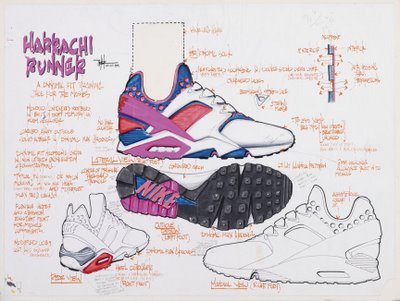 |
| Air Jordan 6-17-23 "Carmine" |
 |
| Air Jordan 6-17-13 "Aqua" |
This deconstructing of our aesthetic understanding of a new sneaker still fails to bring prominence to the nuts and bolts element of the designing process. This can be somewhat of a mystery to many sneakerheads and is truly a world wrapped up in secrecy. It is more than understandable that sneaker companies feel the need for confidentiality but this can only be deemed pragmatic when protecting the newest designs and technologies.
Pressing on though. Tinker Hatfield is a name that needs little introduction. Not only is he one of Nike's most celebrated and innovative designers but the mastermind in every sense behind some of the most iconic sneaker lines in history. Those less familiar with his work might need some introducing to his past exploits and the psyche of the man. By not listening to what the marketers said about his innovations, he continued with what he thought was best, so by designing the likes of the Nike Air Max line, the Air Jordann III through to the XV, the twentieth anniversary Air Jordan XX, the final numbered Air Jordan, the Air Jordan XXIII, the 2010 Air Jordan XXV and countless other models. As a result he is heading up the innovation kitchen out in Portland working with the Likes of Eric Avar and Dwayne Edwards.
The purpose of the visual material included below is really aimed to allow for the illustration and closer examination of the differing languages that sneaker design can communicate in. By stripping the process down to its bare bones, so by witnessing the sneaker's conception and early evolution, not only are we witnessing the great mind of Tinker Hatfield at work, but the construction of the sneaker from the inside out. A process of cause and affect... design into commodity.
Other examples:















No comments:
Post a Comment